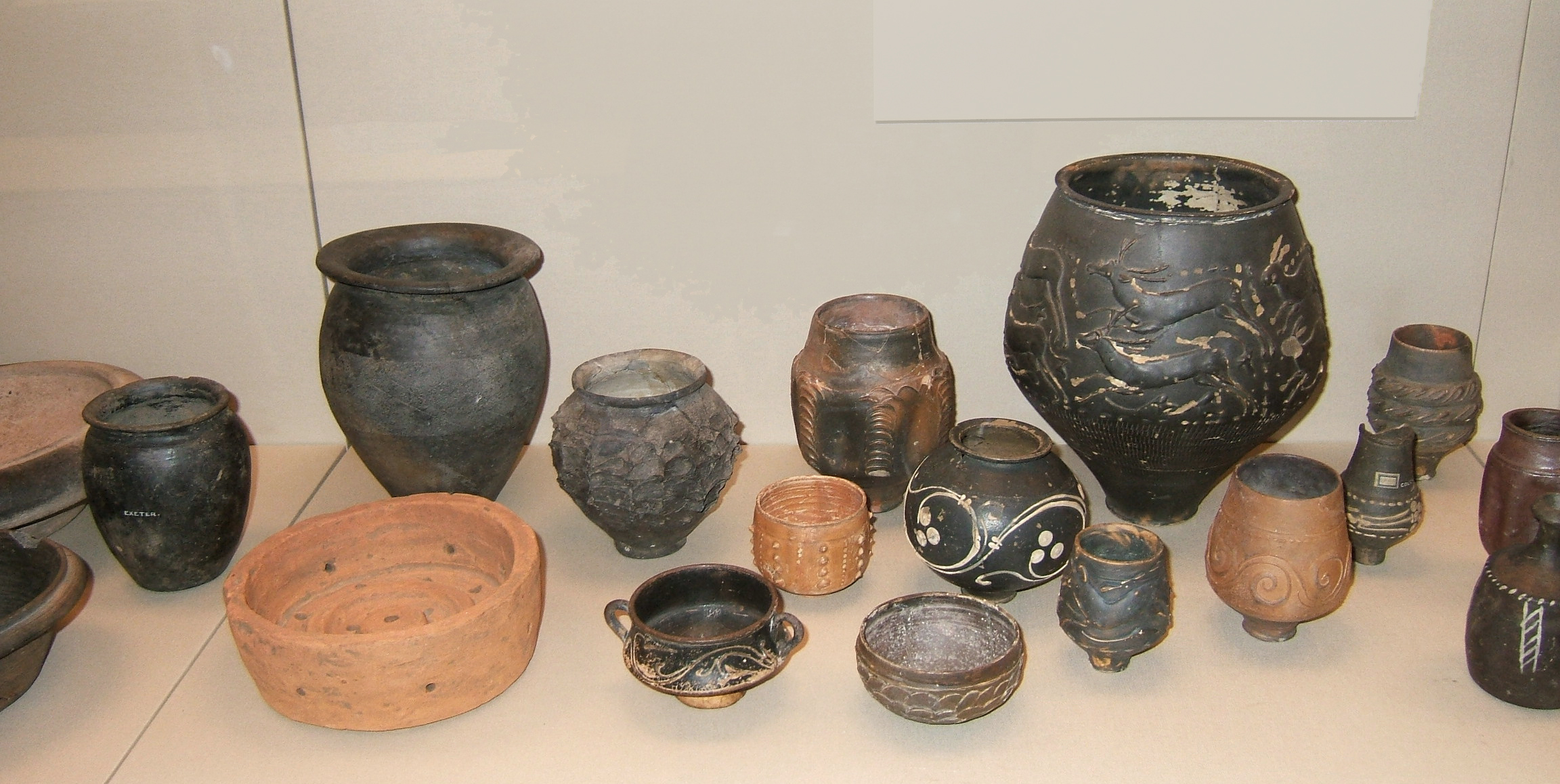black-burnished ware on:
[Wikipedia]
[Google]
[Amazon]
 Black-burnished ware is a type of
Black-burnished ware is a type of
 Black-burnished ware is a type of
Black-burnished ware is a type of Romano-British
The Romano-British culture arose in Britain under the Roman Empire following the Roman conquest in AD 43 and the creation of the province of Britannia. It arose as a fusion of the imported Roman culture with that of the indigenous Britons, a ...
ceramic
A ceramic is any of the various hard, brittle, heat-resistant and corrosion-resistant materials made by shaping and then firing an inorganic, nonmetallic material, such as clay, at a high temperature. Common examples are earthenware, porcelain ...
. Burnishing is a pottery treatment in which the surface of the pot is polished, using a hard smooth surface. The classification includes two entirely different pottery types which share many stylistic characteristics. Black burnished ware 1 (BB1), is a black, coarse and gritty fabric. Vessels are hand made. Black burnished ware 2 (BB2) is a finer, grey-coloured, wheel thrown fabric.
Decoration on both types includes burnished lattice or, additionally, in the case of bowls and dishes, a wavy line design. Standard forms across both types include jars with everted rims and bowls with upright or flat flanged rims.
Black Burnished Ware 1
Black Burnished Ware Category 1 (BB1) is made from a clay body that has a coarse texture. The clay body can contain black iron ores, flint, quartz, red iron ores, shale fragments, and white mica.Tyers, P A. "South-east Dorset black-burnished 1." Potsherd. Accessed February 21, 2011. Last modified December 28, 2010. http://potsherd.net/. BB1 can be grainy and black or dark gray in appearance. These wares are formed by hand. BB1 wares were manufactured in theDorset
Dorset ( ; archaically: Dorsetshire , ) is a county in South West England on the English Channel coast. The ceremonial county comprises the unitary authority areas of Bournemouth, Christchurch and Poole and Dorset (unitary authority), Dors ...
area and distributed throughout Britain. The distribution of BB1 wares dates primarily to the mid-second to fourth centuries AD. Forms include bowls, dishes, and jars.
Early BB1 influenced Vectis ware
Vectis ware is the pottery produced on the Isle of Wight during the Roman period.
Vectis ware is a hard, hand made pottery and most commonly very dark grey in colour due to Burnishing. Three variants have been described. By far the most common ...
.
Black Burnished Ware 2
Black Burnished Ware Category 2 (BB2) is greyer in color and has a finer texture when compared with BB1. It is a “hard, sandy fabric, varying in colour from dark-grey or black with a brown or reddish brown core and a reddish-brown, blue-grey, black or lighter ('pearly grey') surface.”Tyers, P A. "Black-burnished 2." Potsherd. Accessed February 21, 2011. Last modified December 28, 2010. http://potsherd.net/. The clay body can contain black iron ore, mica, and quartz, all in a matrix of sediment. These wares are thrown on a fastpotter's wheel
In pottery, a potter's wheel is a machine used in the shaping (known as throwing) of clay into round ceramic ware. The wheel may also be used during the process of trimming excess clay from leather-hard dried ware that is stiff but malleable, a ...
.
BB2 wares were manufactured on both the Essex and Kent sides of the Thames Estuary. The distribution of BB2 wares occurred from AD 140 through to the mid third century AD in south-east England and the northern part of Britain.
References
{{DEFAULTSORT:Black-Burnished Ware Romano-British pottery